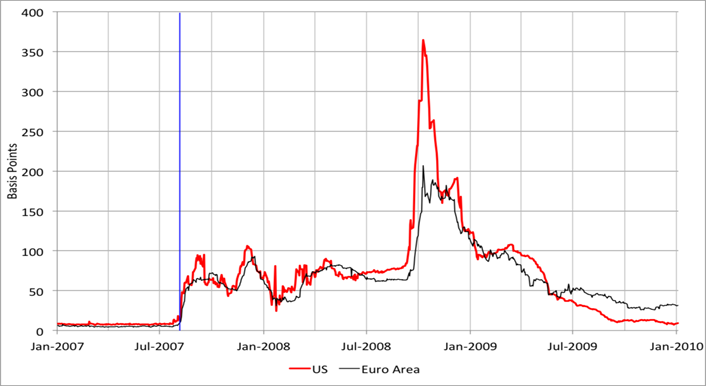7-MINUTE READ
Owning a home comes with its own set of expenses, from mortgage payments to home repairs. On the other hand, one of the perks of owning your own home is the tax breaks that come along with it.
Homeowners insurance is one of the main expenses you’ll pay as a homeowner. Homeowners insurance is typically not tax deductible, but there are other deductions you can claim as long as you keep track of your expenses and itemize your taxes each year. We’ve compiled what you need to know to help you save thousands throughout the year.
10 Tax Deductions For Homeowners
Here are the ten main deductions you should know about.
- Mortgage Points Deduction
Your mortgage debt may be the largest debt you’ll ever tackle. Consider purchasing mortgage points. These can be a great way to not only save money over the duration of your mortgage but also to write off some of the interest paid on your loan.
What Are Mortgage Points?
Mortgage points are often referred to as discount points and are bought up front, at the time you close on your mortgage. One point is equal to 1% of your total mortgage amount. For example, let’s say your home is $200,000 and you want to put down an additional $2,000 at closing. In this case, you’d purchase one mortgage point.
The purpose of mortgage points is to reduce your interest rate over the lifetime of your loan. Your interest rate decreases for each mortgage point you purchase. Let’s say the market rate is 4.5%. You can usually expect to get a .25% discount interest rate reduction for each point you buy. One mortgage point might decrease your rate to 4.25% and two points might decrease it to 4%. Talk to your agent and lender about your specific mortgage point eligibility and requirements.
How Do Tax Deductions Work For Mortgage Points?
You can typically claim the full amount on your taxes the same year you buy mortgage points. There are some stipulations you must meet to qualify, but most U.S. homeowners meet these standards. If your home loan amount is over $750,000, you’ll be limited to a specific amount you can claim on your taxes.
Use Form 1098 (provided by your mortgage lender) to claim the deduction and find the total number of mortgage points purchased. You’ll put this amount on line 10 of Form 1040 Schedule A. Your accountant or tax software can walk you through this step.
Get approved to buy a home.
- Mortgage Insurance Deduction
Let’s say you pay less than 20% on your down payment. Your lender will likely require that you pay private mortgage insurance (PMI), which is a type of insurance that protects the lender if you happen to default on your loan. You can deduct any payments made to the premium of your insurance from your taxes each year.
Your gross annual income should be less than $109,000 to qualify for this deduction. The residence on the mortgage will also have to be a primary or secondary residence and not a property you rent to tenants.
You can claim this deduction by referencing Form 1098 provided by your mortgage insurance provider. The amount paid toward the premium will need to be listed in box 4. You’ll also need to itemize your 1040 Schedule A form, where you can find this deduction listed on line 13.
- Mortgage Interest Deduction
You can also put a little money back into your own pocket with a mortgage interest tax break. This deduction allows you to claim the total amount paid toward your mortgage interest within one year.
Homeowners can deduct the interest paid on the first $750,000 of qualified personal residence debt on a primary or second home.
You can find the amount of mortgage interest paid per year on Form 1098 from your mortgage lender. You’ll report this amount on Schedule A of the 1040 form.
- Property Tax Deduction
Homeownership also requires you to pay property taxes. What you’ll pay in property taxes ranges depending on the state and county you live in as well as the overall value of your home. This covers things likeroad and highway construction, education and more.You can deduct the property tax payments you make each year if you itemize your taxes.
Let’s say you’re married and filing jointly. You can deduct up to $10,000 in property taxes per year when filing your taxes. On the other hand, if you’re single or filing separately, you can deduct up to $5,000 in property taxes. You’ll claim this deduction using Schedule A of the 1040 tax form.
- Rental Deductions
Did you know you’re eligible for a rental deduction if you rent out a part of your home such as a garage apartment, basement or spare bedroom? You’ll need to pay taxes on any rental income, but you can recoup some money through maintenance and repair costs, insurance, utilities and more.
Simply fill out Schedule E of the 1040 form and subtract any rental expenses from your rental income. Be sure to check with a tax professional to ensure you maximize this deduction.
- Home Office Deductions
In some cases, you can actually deduct business expenses from your taxes, particularly if you’re a self-employed homeowner. Your home office expenses qualify you for a tax break. You must be self-employed – not just a remote employee – to qualify for this deduction.
You can calculate the amount you’re able to deduct from your taxes in two ways. The first method involves calculating the actual expenses you spend operating your business from home. This could include maintenance, utilities, internet and other expenses. You’ll need to have documentation to back up your claims.
The second method is a simplified estimate that allows you to deduct $5 per square footage of office space. So, if your work area is a 10×20 space, or 200 square feet, you’d qualify for a $1,000 deduction.
- Home Improvement Deductions
Home improvement products can add tremendous value to your home both by improving your space and increasing your home’s worth. Another upside to home improvement projects is that many of them qualify for tax deductions.
Home improvements that improve your home’s value are called capital improvements. Types of qualified improvements include swimming pools, home additions, garages, a new roof, a new central air conditioning system, water heater upgrades, home security systems and more.
On the flip side, you can’t deduct these expenses in the year you pay for them, but you can deduct them all at once during the year you sell your house. It’s important to keep records of all major home improvements for this reason. A qualified accountant or tax specialist can help you work through all improvements to determine which ones are eligible for this tax break.
- Energy Efficiency Deductions
Energy-efficient homes are more popular than ever, and many homeowners are opting to make energy-saving upgrades. Transforming your home into an energy-efficient property can not only save you money on utility bills, but it can also help you save on your taxes.
The Residential Renewable Energy tax credit allows you to claim credits when you implement solar, wind, geothermal or fuel-cell systems. Energy-efficient upgrades that qualify for this tax credit include solar-powered water heaters, solar panels, wind turbines and geothermal heat pumps.
You can claim this credit for primary and secondary residences (excluding fuel-cell upgrades, which you can only claim for primary homes). Each credit is worth 30% of the expense of the upgrade and there are no limits placed on solar, wind or geothermal credits. Fuel-cell equipment credits are capped at $500 for each half kilowatt of power.
- Medical Home Improvement Deductions
You may make home improvements or upgrades for medical reasons. In that case, you may qualify for additional tax deductions. Medical home improvement could include adding ramps, installing elevators, widening doorways, installing handrails and more. The main requirement to qualify for this deduction is to be able to prove you have (or a member of your household has) a medical reason for requiring the upgrade.
You’ll need to itemize your taxes using Schedule A of the 1040 form to claim this deduction. You can only claim medical improvement expenses that surpass 10% of your adjusted gross income. If the improvement increases your home’s value, you’ll also have to subtract that value increase out of the amount you claim.
For instance, you might install ramps in your home and spend $20,000 doing so, but they may only increase your home’s value by $7,500. In this case, you can only deduct $12,500 ($20,000 minus $7,500). This deduction can get a little complicated, so talk to a qualified tax specialist to help you better understand which improvement qualifies for this tax break and how much you can claim for each improvement.
- Capital Gains Tax Exclusion
You might wonder if you’ll be responsible for paying capital gains tax when you sell your home. The good news is that when you decide to sell, you most likely won’t have to pay a cent of capital gains tax.
Thanks to the Taxpayer Relief Act of 1997, you may be exempt from paying capital gains as long as you meet the qualification criteria. You’ll need to have lived in and owned the home for 2 of the past 5 years and not have used this tax break within the last 2 years. You’re exempt from paying capital gains tax on home profits up to $500,000 if you file taxes jointly. You’re also exempt from paying this tax on home profits up to $250,000 if you’re an individual filer.



